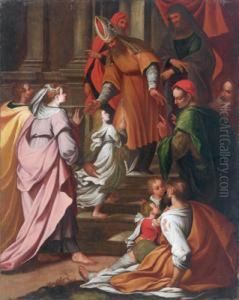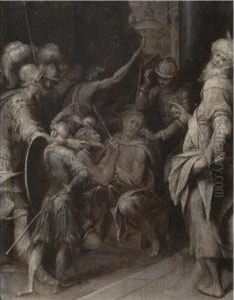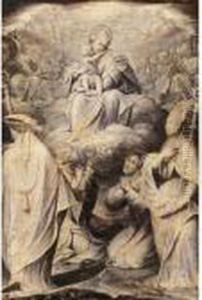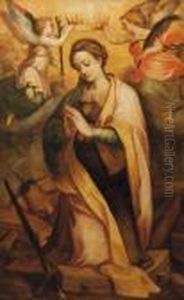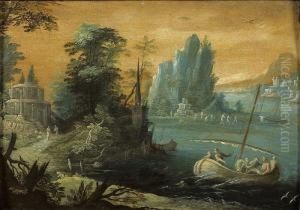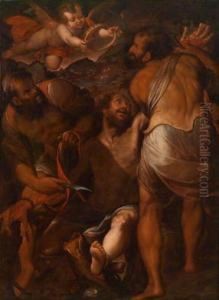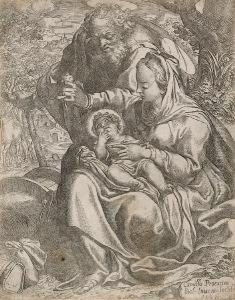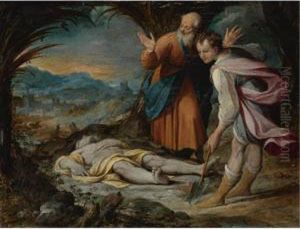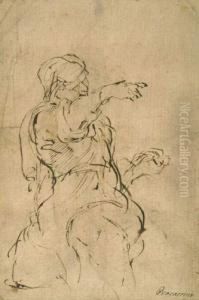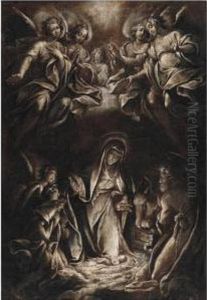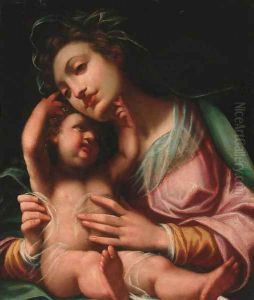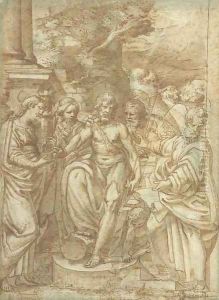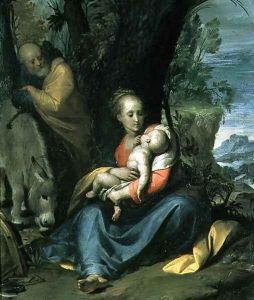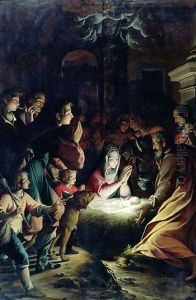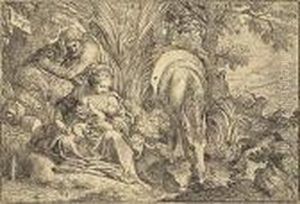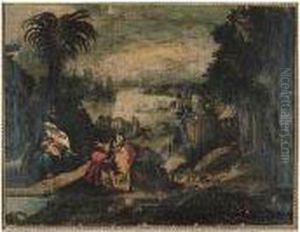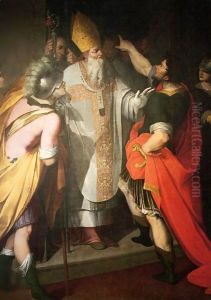Camillo Procaccini Paintings
Camillo Procaccini was an Italian painter and engraver of the late Renaissance and early Baroque periods, active mainly in Milan and Emilia. Born in Bologna in 1561, he was part of a prominent family of artists; his father, Ercole Procaccini the Elder, was a painter, and his brothers, Giulio Cesare and Carlo Antonio, were also accomplished artists. The Procaccini family contributed significantly to the spread of the sophisticated and decorative style characteristic of the late Mannerist period.
Camillo received his initial training from his father and later worked with his brothers. The family moved to Milan in the late 1580s, where Camillo's style further developed. He integrated the Mannerist style he inherited with the emerging Baroque sensibility, creating a unique and dynamic approach to composition and form. His work is known for its energetic figures, dramatic expressions, and a strong sense of movement, often employing bold contrasts of light and shadow.
In Milan, Camillo Procaccini gained significant recognition and a number of important commissions. One of his most notable works is the decoration of the Sacro Monte di Varallo, a complex of chapels in Piedmont, which he worked on alongside his brother, Giulio Cesare. He also painted for the Certosa di Pavia and contributed to the decoration of the Milan Cathedral.
Throughout his career, Camillo created numerous altarpieces, frescoes, and devotional paintings, which were characterized by their vivid color palette and fluid brushwork. His influence was considerable in Lombardy and helped shape the region's transition from Mannerism to Baroque. He also taught and influenced a number of young artists, continuing the family's artistic legacy.
Camillo's work was appreciated not only for its artistic qualities but also for its ability to convey intense religious sentiment, making him a favored artist for church commissions during the Counter-Reformation period. He remained prolific until his death in Milan in 1629, leaving behind a substantial body of work that reflects the stylistic shifts of his time.

